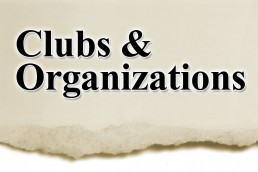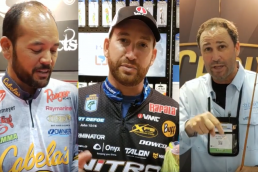Fishing Appeals to People from all Walks of Life
SHARE THIS POST
While the image of the modern American angler is often portrayed in advertising as a strong, middle-aged male, new research by Southwick Associates conducted for the American Sportfishing Association (ASA) reveals a much broader, accurately-detailed view of today’s “typical” angler.
Rural workers, soccer moms, retired professors, young auto mechanics, busy young parents and wealthy empty-nesters who own multiple homes are all part of today’s angling community. The Southwick report, “Lifestyles of Today’s Angler: Tapestry Segmentation of Licensed Anglers,” provides drilled-down information on the lifestyle types most likely to engage in fishing—information critical to organizations and companies looking to connect with this vast, economically and politically powerful audience.
“When neighborhood types are aligned with fishing license data, we get much more specific information about current anglers’ lifestyles, and can identify the potential market for luring more into the angling fold,” says Rob Southwick, president of Southwick Associates.
The study focused on an analysis of fishing license sales data from 12 states overlaid with Address Coder and Tapestry lifestyle segmentation software (both designed by geographic information system [GIS] software developer Esri) to determine the types of neighborhoods, and thus, lifestyles common to anglers of all skill levels and types of fishing. By understanding the types of people who enjoy recreational fishing, it’s possible to determine where additional clusters of existing and potential anglers live in order to better focus marketing and promotional efforts. It can even be used to determine what types of gear and brands of equipment certain anglers will be more apt to buy.
This information is particularly important as conservation groups and state agencies seek to recruit, retain, and reactivate (known as the “R3” initiative) those people apt to participate in angling, as well as those who have fished before or enjoy fishing, but for various reasons do not do it regularly. Through lifestyle segmentation, R3 efforts can improve success rates by targeting those people most likely to respond to promotional activities and angling opportunities.
Are you enjoying this post?
You can be among the first to get the latest info on where to go, what to use and how to use it!
Examples of the types of information revealed in the study include:
- Residents of Cozy Country Living, Rustic Outposts, GenXurban and Family Landscapes (lifestyle, also referred to as LifeMode, types identified in Tapestry) account for 62 percent of licensed anglers.
- Cozy Country Living is the identified lifestyle with the highest rate of fishing participation—its residents are more than two times as likely to fish than the rest of the U.S. population.
- Soccer Moms and Up and Coming Families, both within the Top 10 Tapestry segments, include busy young professionals with families who value their time together. The latter group is one of the fastest growing markets in the country. This group is younger than the stereotypical angler, and has smaller children and is more ethnically diverse.
- The Ethnic Enclaves and Next Wave LifeModes (suburban and urban communities with ethnically diverse populations, particularly Hispanics) currently have low rates of fishing participation, but are predicted to experience the largest population growth in the future, making them better targets for angler recruitment efforts.
- The Green Acres segment is the most common one across all participation categories (retained, recruited and reactivated anglers), accounting for roughly 7 percent of the overall angler population. These people tend to be avid do-it-yourselfers, with all the necessary tools and equipment for home improvement and care of their land. They enjoy a range of outdoor activities. They also tend to be older married couples, many with no children, who live in rural enclaves within more metropolitan areas.
For more information…
For copies of the executive summary or the full report, visit asafishing.org/facts-figures/angler-participation/u.s.-angler-population-their-lifestyles-and-license-buying-habits.
For more information on Esri’s neighborhood/LifeMode classification system, visit doc.arcgis.com/en/esri-demographics/data/tapestry-segmentation.htm.
MWO
SHARE THIS POST
You may also like...
Did you enjoy this post?
You can be among the first to get the latest info on where to go, what to use and how to use it!
MWO
We believe being outdoors is good. With more than 1,000 articles each year, MidWest Outdoors magazine is all about sharing outdoor experiences with you—where to go, what to use and how to use it… whether you’re close to home or on that trip of a lifetime.


